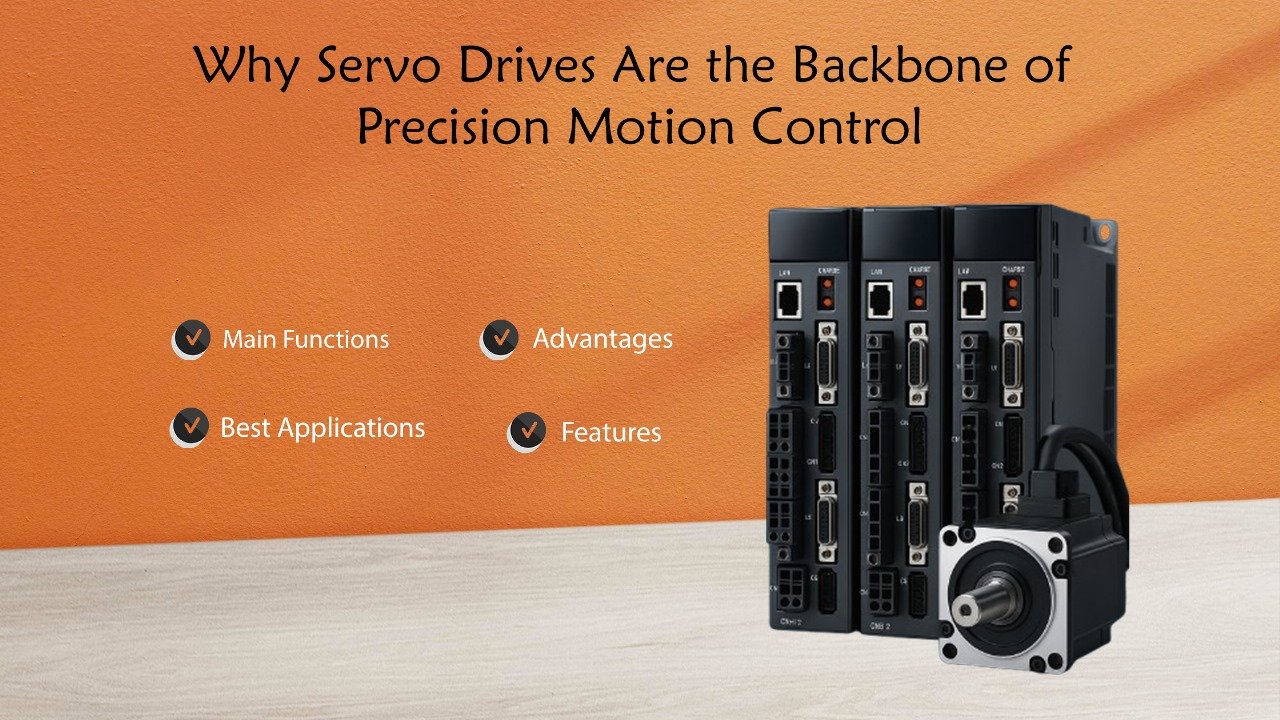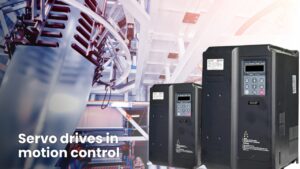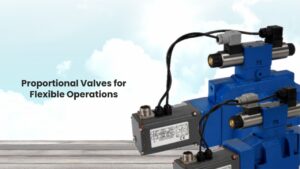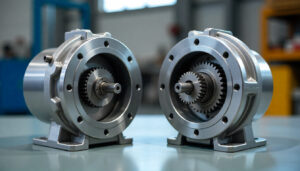The servo motor drive system is the basis of precise, dependable and repeatable motion in the world of modern automation. Be it CNC machines, robotic arms, and packaging systems, servo drives make sure that motors move in the right direction and respond to commands on a real-time basis.
They are not merely a part, they are the spine of precision motion control in the electronics, automotive and many other industries.
Main Functions of Servo Drives:
- Observation of the position, speed and torque of the monitor
- Get feedback through encoders or sensors
- Provide high efficiency motion control
- Increase the safety and performance of the system
Why Servo Drives Matter in Industrial Automation
1. Precision and Accuracy
Industrial servo drives enable machines to move with great precision, frequently to within a fraction of a millimetre. This is essential in areas such as:
- Electronics manufacturing
- Production of medical equipment
- Automotive assembly
2. Real Time Feedback Loop
A servo drive controller continuously controls the operation of a motor by real-time feedback, minimizing error and increasing repeatability.
3. High-Speed Motion Control
High-performance servo drives Unlike traditional drives, high-performance servo drives react quickly to command changes, which is ideal in high-speed sorting, pick-and-place, and packaging applications.
Best Applications of Servo Drives
- CNC machine servo drives: Increase the accuracy, repeatability, and dynamic response of toolpaths.
- Small servo drives: Robotics: Fit into tight spaces and still have high accuracy.
- Energy efficient servo drives: Save energy and heat losses in long duty applications.
- AC servo drives: These drives supply the smooth and controlled torque to industrial motors.
Features That Make Servo Drives a Game-Changer
- Programmable Motion Control
Servo drives are programmable in advance in terms of speed ramps, torque limits, and position setpoints.
- Closed-Loop Feedback
Servo drives use encoder or resolver feedback to make a closed-loop system in real-time, and thus correct errors immediately.
- Integration and Compatibility
Contemporary servo motor drive systems can be used with:
- PLCs
- Industrial PCs
- IoT-based controllers
Selecting the Best Automation Servo Drives
Choosing servo drives to use in your automation process, remember:
1. Power Range & Voltage
Make sure it suits the needs of your motor.
2. Feedback Type
Depending on precision requirements, resolver, encoder or sensorless versions can be purchased.
3. Size and Form Factor
Compact servo drives can be used in robotics or an automation application that requires space.
4. System Compatibility
Be compatible with the kind of motor and controller (e.g. PLC or PAC).
Advantages of Servo Drives
- Better quality of products because of accurate motion
- Fewer down time due to quick fault identification
- Efficient use of energy through energy efficient servo drives
- Easy compatibility with computer systems
- Improved safety due to overcurrent, overvoltage protections
AC Servo Drives vs. DC Servo Drives
|
AC servo drives are widely adopted in servo motor drive systems for their smooth operation, low maintenance, and superior energy efficiency.
Servo Drives in Industry Future
Servo drive controllers will remain to be integrated with AI, cloud monitoring, and predictive maintenance systems as smart factories develop. There will be more intelligent, quicker, and more flexible systems that will continue to optimize industrial manufacture.
Final Thoughts: The Power Behind Precision Motion
Servo drives are the core of motion control systems when precision, speed, and reliability is of concern. Whatever you are working with servo drives to run CNC machines, automation lines, or robotics, it is all about choosing the correct servo motor drive system.
THM Huade provides a broad variety of high-quality, energy-efficient, and high-performance servo drives that are focused on the industrial use. Leave it to us to take your automation systems to a new level with long-lasting and expandable servo systems.
FAQs
Q: What is a servo drive used for?
Servo drives control the movement of servo motors by controlling position, speed and torque. It guarantees accurate and effective automation of industrial equipment.
Q: What is the difference between VFD and servo drive?
A VFD regulates the speed of typical AC motors, and a servo drive provides accurate position and torque control of servo motor systems to use in high-performance applications.
Q: Are servo drives AC or DC?
Servo drives can be in AC and DC. The selection is based on the requirements of the application- the AC types are widely used in industrial automation because of efficiency and control.
Q: Which is better stepper or servo drive?
Servo drives are more suitable in high speed, high torque and precise positioning. Stepper drives are affordable and less efficient when subjected to heavy or dynamic loads.
Q: Can a servo motor rotate 360°?
Yes, most of the servo motors have the ability to rotate 360 or even more in the continuous rotation type. Internal stops limit standard ones, but they provide accurate control over angles.



